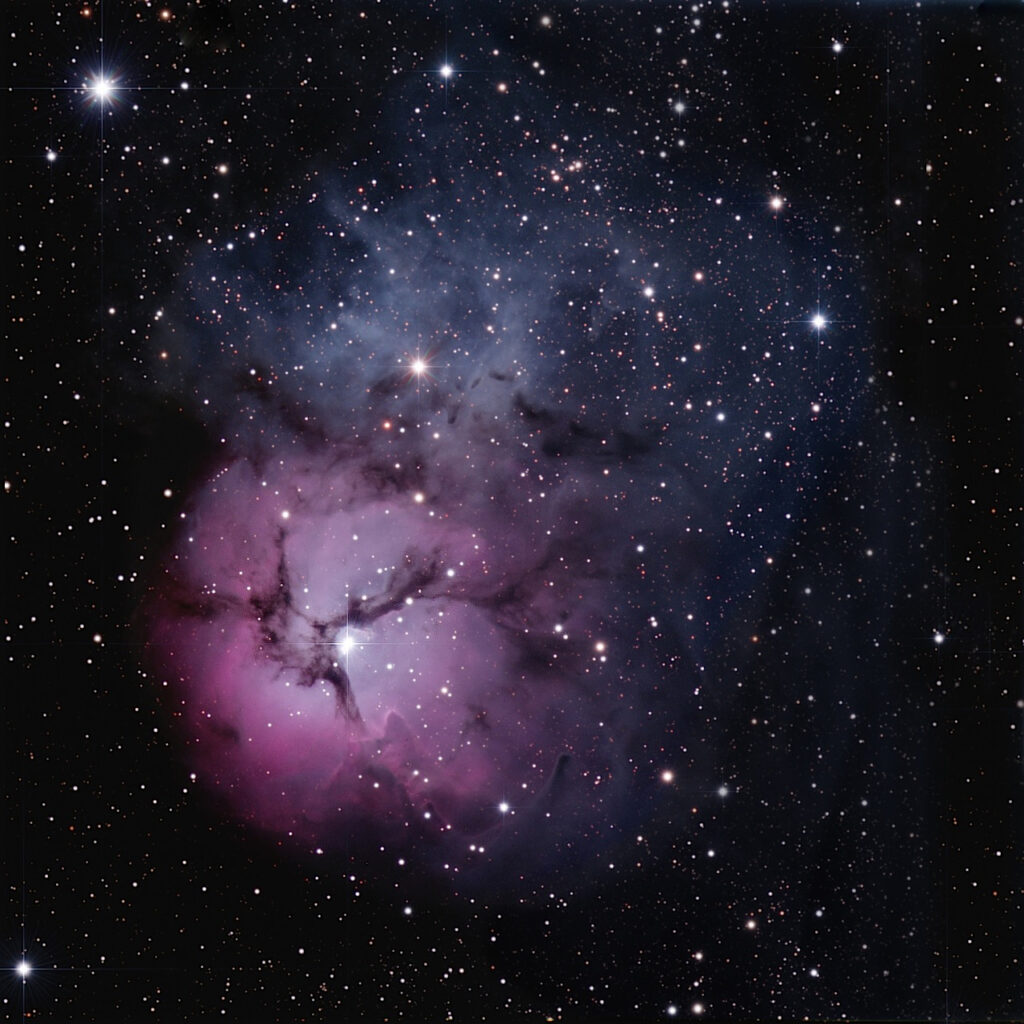The "Trifid Nebula" in the constellation Sagittarius is an unusual combination of emission, reflection, and “dark” nebulae. The nebula was discovered by comet hunter Charles Messier in 1764, and was first called "Trifid" by astronomer John Hershel several years later with reference to its "three-lobed" appearance. The nebula is 5,200 lights years distant, and has a width of 25 light years (150,000,000,000,000 miles).
The red portion of the nebula is an "emission" nebula, so named because it glows as a result of the emission of countless photons as electrons, stripped from hydrogen atoms after absorbing high-energy ultraviolet photons from the hot, young stars in the middle of the nebula reconnect with hydrogen nuclei and cascade down the energy levels toward the ground state. The emission of countless photons causes the nebula to glow in all directions, converting pinpoints of light (the interior stars) into a shimmering cloud of light. The light is predominantly red in color because the photons emitted by electrons transitioning from the third to the second energy levels in hydrogen atoms have a wavelength of 656 nanometers, which the human eye sees as red.
The largest and hottest star in the emission nebula is an “O class” blue giant star (SAO 186145) that is the brightest star in the center of the red region. It is actually a triple star. If you look closely, you can see the larger two of the three stars in this system. O class stars are rare, comprising only about 1 in every 30,000 stars. They are blue giant stars that emit a prodigious amount of heat and high-energy radiation, and quickly burn up their nuclear fuel.
The blue region of the Trifid Nebula is a "reflection nebula." Too far from the central stars to experience ionization of hydrogen atoms, it glows by reflecting the light of the emission nebula.
The black lanes that divide the nebula are “dark nebulae” consisting mostly of nonluminous interstellar gas and dust.
The "Trifid Nebula" (M20) in Sagittarius
Date Taken:July 3, 2014
Location Taken:Siding Spring Observatory, NSW Australia
Conditions of Location: Equipment Used:Planewave 700mm (0.7 meter) corrected Dalh-Kirkham telescope, FLI PL009000 CCD camera
Processing Used:8 x 3 minutes LRGB, processed in Maxim DL and Photoshop, for a total exposure of 96 minutes
Distance from Location:5,200 light years
Constellation:Sagittarius
Other Link:
